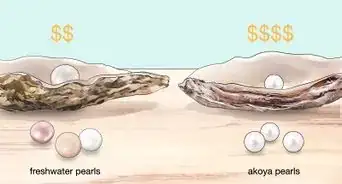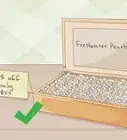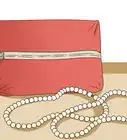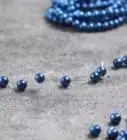wikiHow is a “wiki,” similar to Wikipedia, which means that many of our articles are co-written by multiple authors. To create this article, 32 people, some anonymous, worked to edit and improve it over time.
wikiHow marks an article as reader-approved once it receives enough positive feedback. In this case, 95% of readers who voted found the article helpful, earning it our reader-approved status.
This article has been viewed 240,418 times.
Learn more...
Pearl buying isn't as simple as just picking the prettiest in a bunch—if you're looking for quality. There are many things to take into consideration when choosing pearls to buy, including the location it was grown, the overall size and appearance, and the way in which it was grown. To make sure you get a good deal on a pearl strand purchase, learn about the important qualities and styles of pearls available on the market.
Steps
Selecting a Type
-
1Choose a growth style. Cultured pearls grow through a process in which a small piece of sediment – a grain of sand or a bit of shell – is deposited inside of an oyster. The oyster then coats the deposit with a glossy secretion called nacre. Over time, the nacre builds layers to form a pearl. Originally, pearls could be found in abundance in oysters throughout the oceans, but now they can be grown in laboratories. Therefore, there are two types of pearl growth: natural and cultured.
- Natural pearls are rare and expensive. They look the same as cultured pearls, the only difference is that they were grown cultivated in a wild oyster.
- Cultured pearls are made by implanting a piece of sand in an oyster and waiting for the pearl to grow. The majority of bought pearls are cultured. These look identical to natural pearls, but are man-made.
-
2Compare freshwater versus saltwater pearls. Freshwater pearls are different from saltwater pearls. Freshwater pearls are cultured in mussels, while saltwater pearls grow in oysters. Freshwater pearls come in diverse shapes, colors, and lustres, but are most often found in the ‘baroque’ shape – lumpy and natural looking, and are no larger than 7mm. Saltwater pearls also come in many shapes, but can grow large. Saltwater pearls are classified based on where they were grown/type of oyster they were grown in.
- Freshwater pearls can be round, but these are more expensive than their baroque counterparts.
- Both freshwater and saltwater are available in nearly any color.
Advertisement -
3Examine Akoya pearls. Akoya pearls, named after the Akoya oyster in Japan which they are grown in, are the epitome of the classic pearl. Akoya pearls are milky white or rose in color, with silver or gold overtones. However, they are also available in cream, minty green, and light blue. Akoya pearls range in size from 3mm to 10mm, and exist in the classic round shape.
-
4South Sea black pearls. South Sea black pearls are grown in black-lipped oysters off the coast of Tahiti. Pearls from this region are renowned for their rich black hue and large size. South Sea pearls start at 8mm, and get even larger. The most sought-after color of this type of pearl is black with a peacock green undertone. These pearls are also available in rich navy blue, silver and slate, deep plum, and dark green, and may have overtones of pink and blue.
-
5South Sea white pearls. Grown in the silver-lipped oyster, South Sea white pearls are found off the shores of Australia, Indonesia, Burma and Okinawa. Similar to black pearls grown in the region, South Sea white pearls are large and have a high luster. These aren’t harvested until they are at least 9mm, making them more expensive than small white Akoya pearls. They are found primarily in creamy white and silver hues, but they may have a rose overtone.
-
6South Sea gold pearls. The rarest of all pearl varieties is the South Sea gold pearl. These are only grown in gold lipped oysters near the waters of Tahiti and surrounding tropical areas. These pearls are large – starting at 9mm – and valued for their unique color. These range in hues from light champagne to bright gold, the latter being more sought after. The gold-lipped oyster also produces white and cream pearls, but these look similar to those made by the silver-lipped oyster.
-
7Cortez pearls. Cortez pearls are a rare variety, grown in rainbow-lipped oysters off the coast of the Sea of Cortez in Mexico. They are classified as black pearls, but also come in a variety of colors. The most beautiful of the Cortez pearls (and most iconic) is dark pistachio green with bright rainbow overtones (primarily rose and gold). These pearls begin at 8mm, growing to 12 mm in size.[1]
-
8Conch pearls. Conch pearls (pronounced ‘Konk’) are not traditional pearls, as they are non-nacreal (the saliva-like liquid in oysters) and are formed inside a conch shell. Conches are large mollusks in a spiral shell, found in the Caribbean and South Pacific Seas. Conch pearls are incredibly unique in appearance. They are found in bright pink and peach shades, with a flame-like pattern on the exterior. The flame, similar to that seen in an opal, determines the value of the pearl. They come in various sizes and shapes, but few are round.[2]
Examining the Qualities
-
1Color. The color is the first thing you notice about a pearl. While the color will vary widely depending on the type of pearl you’re looking at, pay attention to two things: the body color, and the overtone color. The body color is the primary hue of the pearl, while the overtone color is the sheen or the color that ‘pools’ on the surface of the pearl. For example, a pearl might be white with rose overtones, or black with green overtones.
- Always examine a pearl’s color against a white backdrop, such as a piece of white velvet or a similarly glare-free fabric.
- Use diffused full-spectrum light when examining the pearl’s color.
- If you’re buying a strand of pearls, always examine the colors of each of the pearls in contrast to the ones next to it.
-
2Look at the luster. Similar to looking at the color of a pearl, the luster refers to how much shine/reflection a pearl has. The shinier a pearl, the more valuable it is. When examining the luster of a pearl, see how closely the reflection resembles a mirror, and how much light it reflects. The more of a mirror-image the pearl is able to provide, the higher the value.
- Luster is easy to examine in a round pearl, while it is more difficult to examine in a baroque pearl because of the many contours.
- Check the whole pearl to make sure the luster is the same the whole way around.
-
3Check out the surface perfection. Entirely round pearls are very rare; most are a bit off-round or lumpy, with minor surface imperfections. You should examine each pearl on a strand, looking at the surface (im)perfection. There may be small marks, grooves, or lumps on the surface of the pearl. These are the result of other foreign bodies inside the oyster brushing against the pearl while it is being made. On the flip side, you want to make sure that imperfections on the pearl have not been removed. Sometimes pearls are ‘worked’ - sanded down - to reduce blemishes on the surface, but this lowers the value. You can see if a pearl has been worked if there is a change in luster or obvious texture difference on a certain part.
-
4Consider the size. The size of a pearl will vary depending on the type of conditions it was grown in, and the size of the original bit of debris at the center. Larger pearls are obviously more valuable than smaller ones, because they are much more rare. The bigger a pearl, the larger the original bit of sediment, and the longer it was left to ‘cure’ in the oyster. The size of any particular pearl will range from 3mm to 12mm, although you may find some that are smaller or larger than this. When examining a strand of pearls, it is ideal if they are all the same (or very close in) size.
-
5Look at the shape. There are many different possible shapes that pearls are available in, with round typically being the most valuable because they are the most difficult to form. However, the shape of a pearl is generally dependent on personal preference, as some shape styles are more appropriate for certain settings than others. Possible pearl shapes include:[3]
- Round: perfectly spherical with no surface blemishes.
- Off-round: slightly wider on one side of the pearl, but not elliptical. Off-round pearls can be easily passed off as round pearls in a strand.
- Oval: rounded with a significant difference between the length and the width. A step further than an off-round pearl.
- Drop: egg-shaped with one end that’s rounded, and one end that’s slightly pointed.
- Button: a mostly round pearl, with one or two asymmetrical curves.
- Mabe: a round pearl that is flat on one side, creating a half circle.
- Baroque: a ‘natural’ pearl with lots of lumps and asymmetrical curves.
-
6Examine the nacre. The nacre is the substance excreted by the oyster that creates the pearl, when built up over the nucleus object. The longer a pearl is left inside an oyster, the more nacre it builds over time. As a result, highly nacreous pearls are more sought-after than low or non-nacreous pearls. A high amount of nacre increases the luster of a pearl. You can tell if a pearl has thin or medium nacre if you can see the nucleus reflecting inside, or if the exterior scratches away easily. The more nacre a pearl has, the stronger it is.
- Pearls grown in clams and conches are non-nacreous.
-
7Look at the similarities on a strand. If you are purchasing a strand of pearls that is staying together as a set, it is important that you find a strand with pearls nearly identical to each other. The more similar each of the pearls is in a strand, the more cohesive the overall look is. Compare and contrast each pearl up close,and look at them next to each other from a bit of distance away. Pay attention to the overall color, size, shape, luster, and nacre qualities of each of the pearls as your compare and contrast.
- The exception to this rule is a strand of baroque pearls; pay attention to color and luster, rather than shape.
Choosing a Strand
-
1Look at buying loose strands. Loose strands of pearls are those that have been drilled to form beads, but are not yet strung into a necklace. As a result, loose strands of pearls are the cheapest form, but they require work on your part to make them into a piece of jewelry. You can also buy un-drilled loose pearls for use in settings for rings and earrings, keeping the same concept in mind.
-
2Consider getting a choker. A choker is the shortest pearl necklace strand available. It is designed so that it sits close to the base of the neck (so close it’s as if it’s choking you). Chokers are generally 10–14 inches (25.4–35.6 cm), depending on the person wearing it.
-
3Look into getting a princess strand. A princess necklace is typically the favorite of pear-wearers. It is associated with the classic and sophisticated look of the 1940’s, with a draping strand of pearls that lands just below the hollow of the neck. A princess necklace is generally 16–19 inches (40.6–48.3 cm) long.
-
4Check out a matinee necklace.The next step after a princess necklace, the matinee is reserved for semi-formal events and is a bit longer than the aforementioned strands. The matinee generally ranges from 20–24 inches (50.8–61.0 cm) long.
-
5Look at an opera necklace. The opera style of pearl strands is reserved for formal occasions, as a result of it’s long length (and associated high price). The opera length of necklace ranges from 30–36 inches (76.2–91.4 cm) long, draping just below the bust line.
-
6Consider getting a rope strand. A rope strand of pearls is the longest available, starting at a length of 36-inches and longer. Rope strands are worn doubled over or knotted, giving the appearance of multiple strands of pearls.
-
7Look at a bib necklace. A bib style necklace refers to multiple strands of pearls of differing lengths, attached to the same clasp. As a result of the layering, they give the appearance of a bib. Bib necklaces are generally used for semi-formal and formal occasions, because they tend to be on the showier side.[4]
Community Q&A
-
QuestionI have a pearl sea-drop-like egg; how can I know if it is real? And if so, how can I gauge its worth?
 Community AnswerTake it to a jeweler to have it appraised.
Community AnswerTake it to a jeweler to have it appraised. -
QuestionWhat is the best way to buy a pearl necklace?
 Community AnswerIt is best to actually go to a physical store that has very good prices and is recommended by someone. Do some research of stores and their reviews.
Community AnswerIt is best to actually go to a physical store that has very good prices and is recommended by someone. Do some research of stores and their reviews. -
QuestionAre striped, colored pearls possible?
 Community AnswerNot unless they are artificial pearls. You can get pearls in 3 natural tons of cream, pink and white.
Community AnswerNot unless they are artificial pearls. You can get pearls in 3 natural tons of cream, pink and white.
Warnings
- Before you make your decision, ask to see several strands of pearls with different surface qualities to help you understand the benefits and trade-offs.⧼thumbs_response⧽
- Dipped or dyed pearls should be relatively inexpensive compared to pearls with true color. Look for a statement of authenticity or a reputable brand.⧼thumbs_response⧽
References
About This Article
To buy pearls, look for pearls with a lot of luster, since they'll be more valuable. You should also try to examine the pearls against a white background, which will make it easier to see their color. When you're choosing a strand of pearls, try to pick one with similar sized pearls so they compliment each other. Additionally, remember that pearls are not usually completely round. However, you should check the surface of each pearl for blemishes before purchasing them. To find out more about the different types of pearls you can buy, like South Sea gold pearls or Akoya pearls, keep reading!



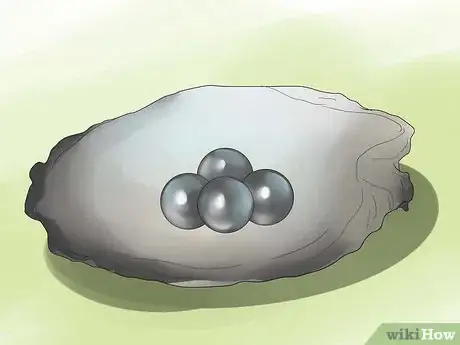
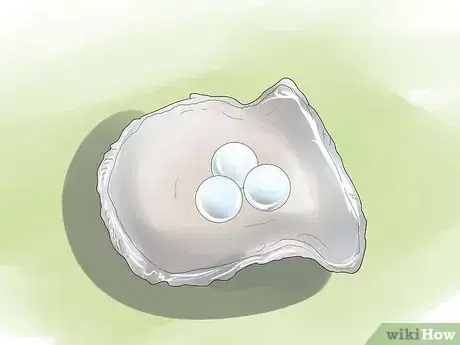
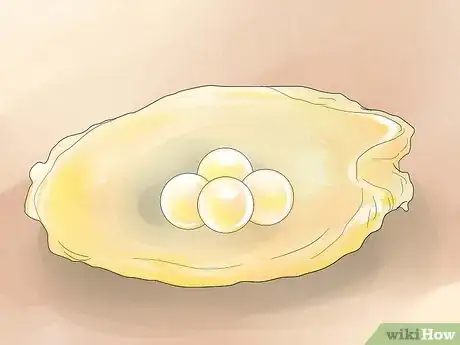


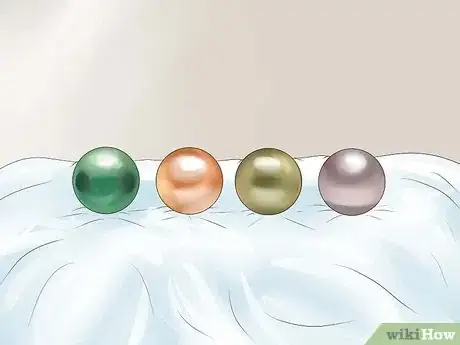
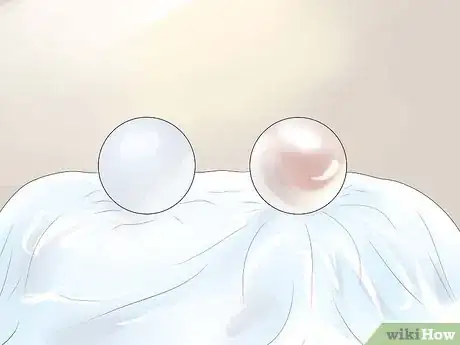
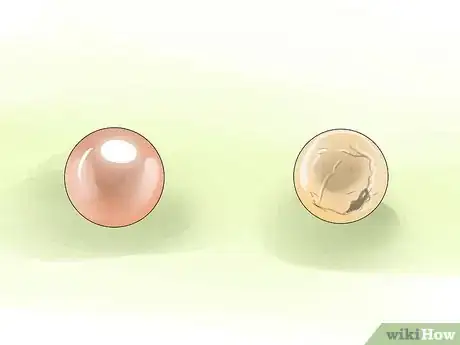
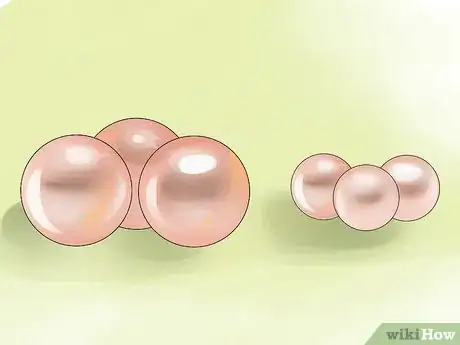
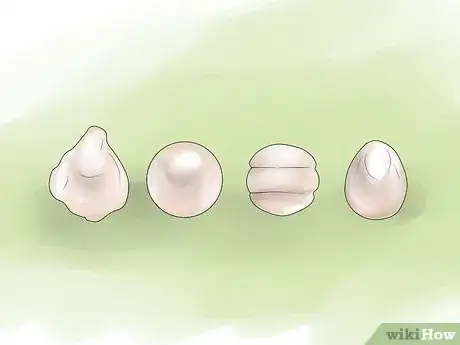

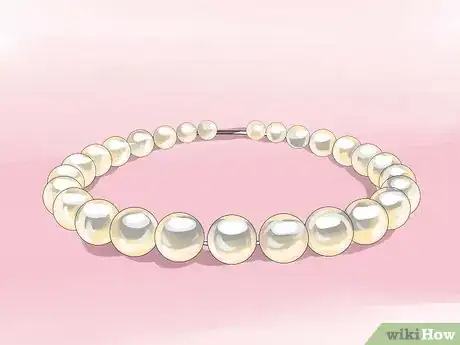


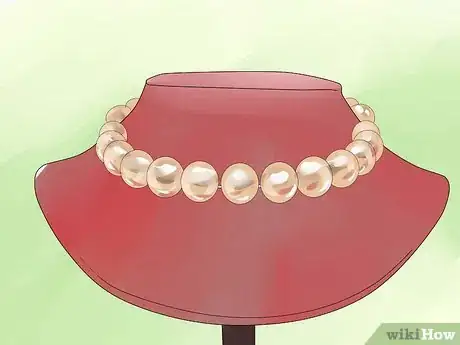


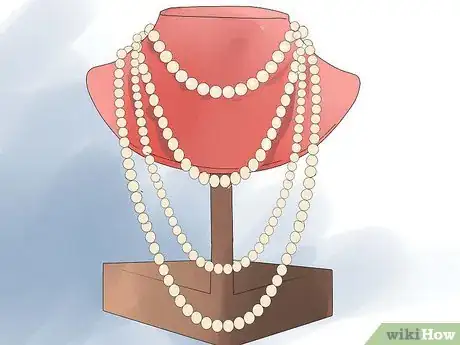
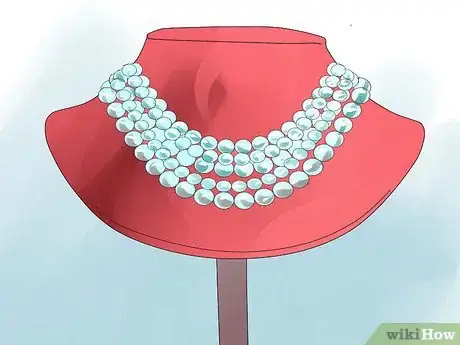
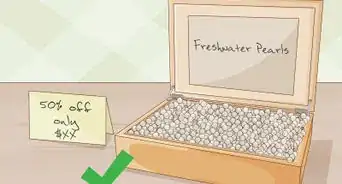
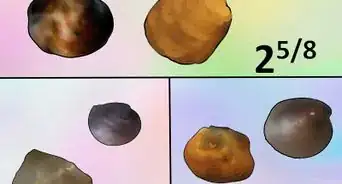
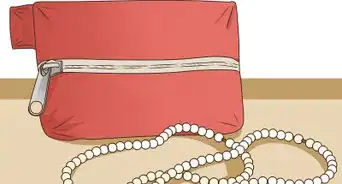



-Step-4.webp)
